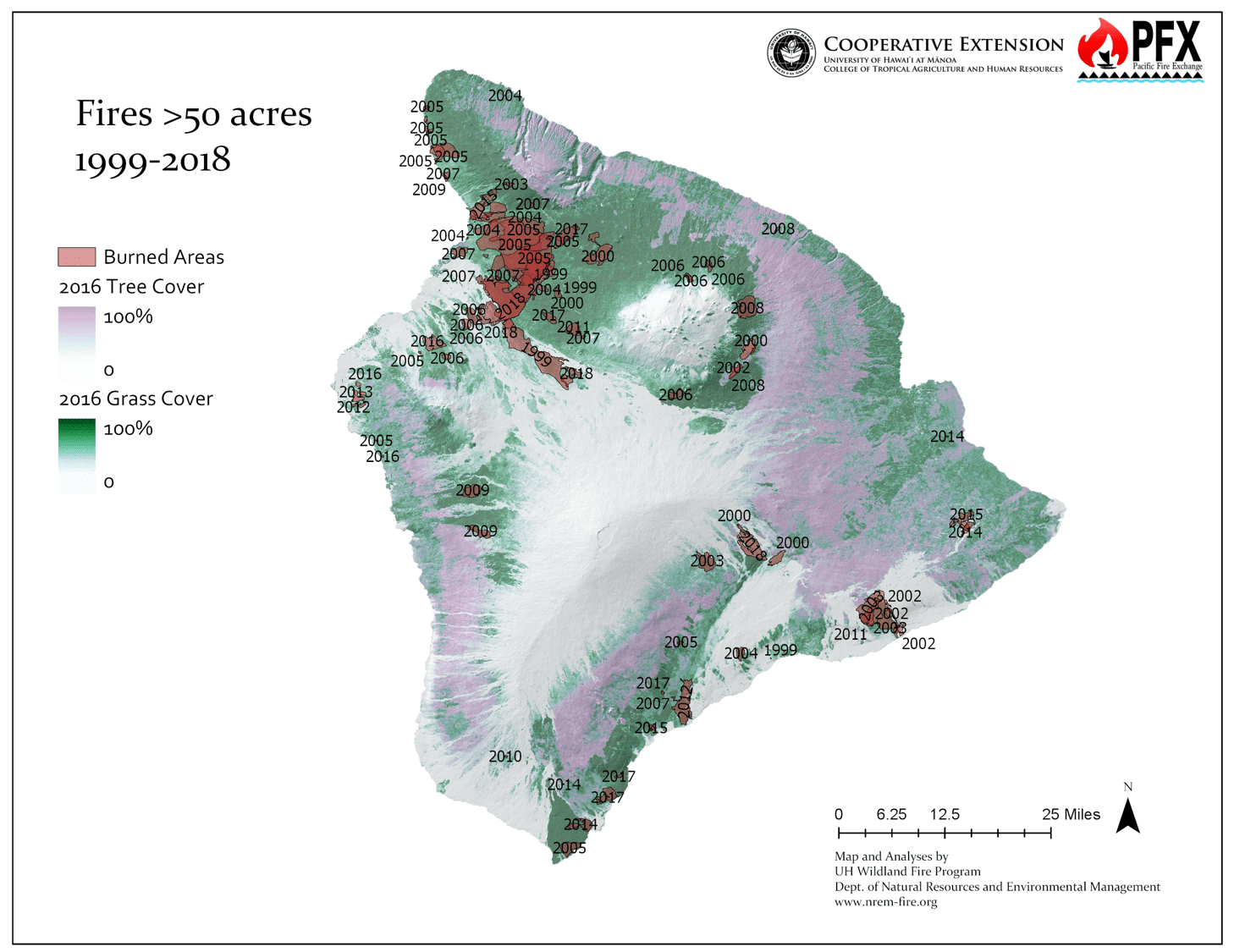Hawai‘i Island
Hawaiʻi Island is unique in that it is the only Hawaiian island with ongoing active volcanic eruptions. However, humans are still by far the leading cause of wildfire ignitions. The majority of wildfires on Hawaiʻi Island are caused by human error or arson, especially near developments, power line right of ways, and along roadsides.
Fire Today
Rainfall follows the typical pattern of the Hawaiian Islands, with more rain along the eastern windward coast. Mauna Kea and Mauna Loa create a rain shadow that results in drier conditions on the western leeward coasts. Most of the former sugar plantation lands are on the wetter windward side of the island, along the Hāmākua Coast. Despite this location, there is a long history of fires in the area. It was the large 1901 Hāmākua coast fire that was the impetus for keeping wildfire records in Hawaiʻi. >> READ MORE
On the leeward side, the Kohala area is particularly fire-prone. This drier region with large areas of fallow pasture and agricultural land has a high rate of ignitions vis-a-vis human infrastructure, as well as more regular large fires.
The growing footprint of these grass-dominated fallow agricultural lands combined with increasing human population increases the risk of wildfire across the island. The hazardous vegetation and high number of ignitions is exacerbated by climate change creating more frequent drought conditions.
Seasonal variation in rainfall also affects both ignitions and the extent of areas which burn. Particularly wet periods over a rainy season can, counterintuitively, significantly elevate hazard levels. Increased precipitation may lead to a surplus of vegetation growth, becoming potential fuel during subsequent drier periods, thereby elevating the risk of large wildfires. Given the changing wind and rainfall patterns arising from climate change, this may lead to increased risk.

Recent Resources For Hawai‘i
Members of our community from three islands will talk about their efforts in reducing the threat of wildfire across boundaries. Robbie Justice of Forest Solutions, Inc. on Hawai‘i Island, Jeremie Makepa of ‘Āina Alliance on Kaua‘i, and Erin Peyton of Paniolo Hale Firewise Committee on Moloka‘i share their lessons learned in reducing hazardous fuels and how agencies, landowners and residents can work together collectively.
Some introduced grasses in Hawai`i are especially fire prone and present challenges to land owners, land stewards and those concerned with the spread of wildfire. This ID guide is a quick reference to identify and control fire-adapted grasses.
After fire, there are immediate actions you can take to ensure a recovery for the people first of all, soil and water conservation






